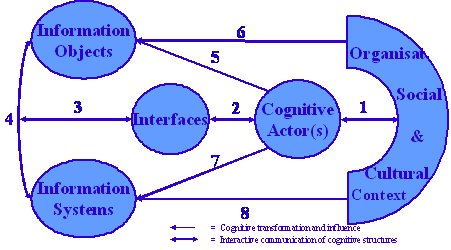Peter Ingwersen’s Turn
Yesterday I had the pleasure to attend a lecture at UCLA given by Peter Ingwersen, Professor of Information Retrieval and Seeking, Royal School of Library and Information Science, Denmark. Peter was the 2009/2010 recipient of the Contribution to Information Science & Technology Award from the Los Angeles chapter of ASIS&T, the 21st person to be so honored. He gave an interesting talk on frameworks in information seeking which explored the philosophical foundations of the “Cranfield paradigm” and proposed ways of extending the approach to incorporate the behaviors of–gasp!–real users!
Drawing on material from his book (co-written with Kalervo Järvelin) “The Turn: Integration of Information Seeking and Retrieval in Context“, he described his “Spaceship” model

A general analytical model of information seeking and retrieval (from Information Research Vol. 10 No. 1, October 2004)
Professor of Information Retrieval and Seeking, Royal School of Library and Information Science, Denmark
